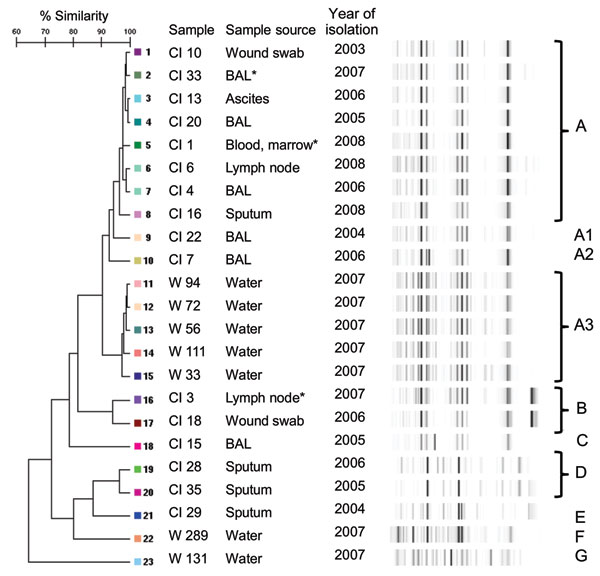Volume 17, Number 3—March 2011
Research
Mycobacterium lentiflavum in Drinking Water Supplies, Australia
Figure 3

Figure 3. Dendrogram and virtual gel images representing rep-PCR fingerprint patterns of 16 human and 7 water isolates of Mycobacterium lentiflavum, Brisbane, Queensland, Australia, 2001–2008. CI, clinical isolate; W, potable water isolate; BAL, bronchoalveolar lavage. *Clinically significant isolate.
Page created: January 17, 2012
Page updated: January 17, 2012
Page reviewed: January 17, 2012
The conclusions, findings, and opinions expressed by authors contributing to this journal do not necessarily reflect the official position of the U.S. Department of Health and Human Services, the Public Health Service, the Centers for Disease Control and Prevention, or the authors' affiliated institutions. Use of trade names is for identification only and does not imply endorsement by any of the groups named above.